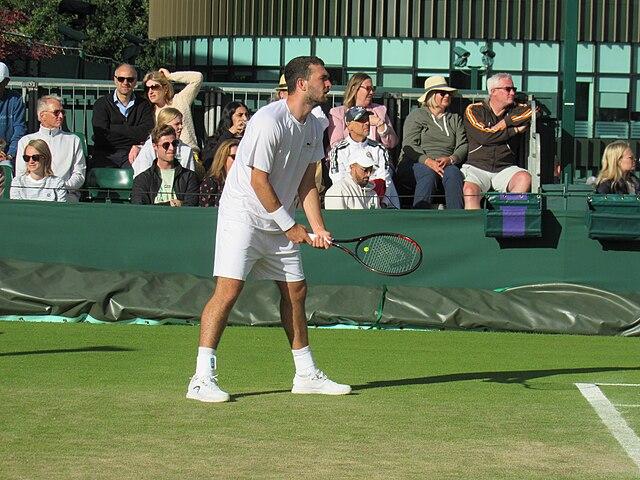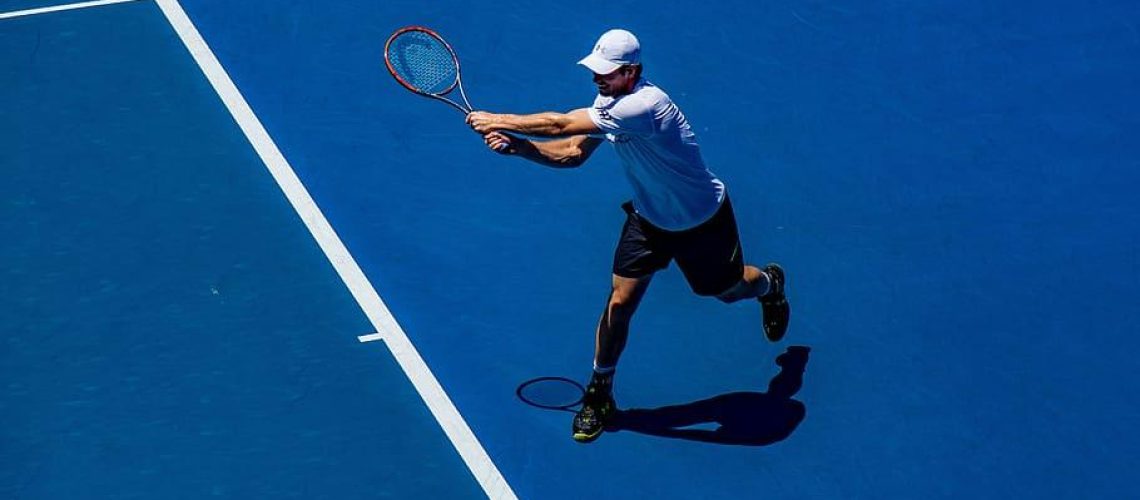We may earn money or products from the companies mentioned in this post.
A Quick Summary

Foot faults are a violation in tennis that can result in the loss of a serve point and long-term implications such as missing out on ranking points and damaging a player’s reputation. To avoid these penalties, players must practice proper footwork techniques and maintain focus during the game.
Introduction to Foot Fault in Tennis

A Brief Overview of the Foot Fault Rule
In tennis, a foot fault occurs when a player steps on or over the baseline and touches the court before hitting their serve According to the official rules of tennis, this is considered a violation and results in the server losing the point The rule is enforced by an umpire who stands at the net and monitors both players for any violations
The foot fault rule was introduced to ensure fairness in competitive play and prevent servers from gaining an unfair advantage by stepping too far into the court before hitting their serve The rule applies to all levels of competitive play, from amateur tournaments to professional matches
The Importance of Understanding and Avoiding Foot Faults in Competitive Tennis
Foot faults can have a significant impact on a player’s performance in a tennis match Losing points due to foot faults can lead to frustration, loss of confidence, and ultimately affect overall gameplay Therefore, it’s essential for players to understand how foot faults occur and take measures to avoid them during matches
One way for players to avoid foot faults is by practicing proper footwork techniques during training sessions This involves focusing on maintaining balance while serving and being aware of where their feet are positioned before making contact with the ball
Another important aspect is understanding how different court surfaces may affect one’s footing while serving For example, clay courts tend to be softer than hard courts, which can cause players’ feet to sink into the ground more easily, potentially increasing the risk of committing a foot fault
In conclusion, having knowledge about foot faults and actively taking steps towards avoiding them can help improve a player’s overall performance on the court By doing so, they can reduce errors during matches that may negatively impact their game or even lead to a loss
| Key Point | Description |
|---|---|
| Knowledge about foot faults | Understanding the rule and its implications can help players avoid errors during matches. |
| Practicing proper footwork | Focusing on maintaining balance and being aware of foot positioning can reduce the risk of committing a foot fault. |
| Different court surfaces | Being aware of how surfaces like clay or hard courts affect footing can help players adjust their technique accordingly. |
of the prompt
The Technicalities of a Foot Fault

Foot faults are an essential element of tennis, and their proper recognition and application is vital for maintaining the integrity of the game The International Tennis Federation (ITF), Association of Tennis Professionals (ATP), and Women’s Tennis Association (WTA) have established clear rules and regulations governing foot faults to ensure fair play
Official Rules and Regulations Governing Foot Faults
The ITF, ATP, and WTA have defined specific guidelines regarding foot faults that players must follow during service These organizations define the baseline as the line at the back of each court that determines whether a ball is in or out of play The service box is located inside each end of the court and is used to determine where serves must be directed
In addition, these organizations have established requirements related to foot placement during service motion Players must place one foot behind the baseline while holding on to a racquet before starting their serve motion The server must then keep both feet behind this line until they strike the ball
Different Types of Foot Faults Commonly Observed
There are different types of foot faults that officials commonly observe during matches:
Front Foot Fault:
This occurs when a player steps on or over the baseline before striking the ball
Back Foot Fault:
This happens when a player’s back foot crosses an imaginary extension of the centerline or touches it before making contact with the ball
Time Violation:
This occurs when a server fails to start their service motion within stipulated time after being ready for play
In conclusion, understanding and following the rules and regulations governing foot faults is critical to playing fair tennis All players must adhere to these guidelines, and officials must enforce them consistently during matches to ensure that every player has an equal opportunity to compete
| Key Point | Description |
|---|---|
| Understanding Rules | It’s crucial to understand foot fault rules and regulations for playing fair tennis. |
| Player Adherence | All players must adhere to the guidelines governing foot faults. |
| Consistent Enforcement | Officials must enforce foot fault rules consistently during matches for equal opportunities. |
Consequences and Penalties for Foot Faults in Tennis Matches

Immediate consequences during a match
A foot fault is one of the most common violations in tennis It occurs when a player steps on or over the baseline before hitting their serve The immediate consequence of a foot fault is the loss of serve point, which can have a significant impact on individual games
Singles matches
In singles matches, losing a serve point due to a foot fault can be particularly devastating It gives the opponent an advantage, allowing them to take control of the game and potentially secure a break point Losing just one game can make all the difference in tennis, so players must avoid committing foot faults at all costs
Doubles matches
In doubles matches, the consequences of a foot fault may not be as severe since players take turns serving However, it still gives their opponents an advantage and puts extra pressure on their partner to hold serve In addition to losing points, players may also receive warnings or even penalties for repeated foot faults
Long term implications
While losing just one serve point due to a foot fault may not seem like much during a match, it can have long term implications for players
Potential impact on players’ rankings and career development
In professional tennis tournaments where ranking points are awarded based on performance, every game won or lost matters Losing points due to foot faults could mean missing out on crucial ranking points that determine eligibility for future tournaments and affect career development opportunities
Loss of player reputation
Tennis is not just about winning; it’s also about sportsmanship and fair play Repeatedly committing foot faults can damage a player’s reputation and make them appear unprofessional or careless This can affect their relationships with sponsors, fans, and other players, leading to a negative impact on their career in the long term
Overall, foot faults may seem like a minor infraction during a tennis match However, they can have significant short-term and long-term consequences for players To avoid these penalties, players must practice proper footwork techniques and maintain focus throughout the game
| Key Point | Short-term Consequence | Long-term Consequence |
|---|---|---|
| Loss of serve point due to foot fault | Gives opponent an advantage in the game | Can impact ranking points and tournament eligibility |
| Repeated foot faults | May receive warnings or penalties | Damage to player’s reputation |
| Importance of proper footwork | Avoids loss of points during match | Fosters sportsmanship and fair play |
Useful Links

Tennis | Rules and Equipment | Serve basics: foot faults
THE CODE The Players’ Guide to Fair Play and the …
Foot fault Definition & Meaning
What Is A Foot Fault In Tennis?
The Next Rule Change in Tennis?
What Is Foot Fault In Tennis
Foot-Fault deliberations
It’s Time to Give the Foot Fault Its Due
What Is a Foot Fault in Tennis?
Good Question: Sept/Oct 2020
What is the Penalty for a Foot Fault in Tennis? –
Foot Fault Tennis (@footfaulttennis) / Twitter
What Is a Foot Fault in Tennis: Rules, Impact, and Avoidance
Foot Fault in Tennis: Causes, Consequences, and How to …
HOW DO YOU HANDLE OPPONENT FOOT FAULTS
What is a Fault in Tennis – What are the Different Types?
foot fault
What is a foot fault in tennis? – Betting Dog
Former Line Umpire Explains Foot Faults In Tennis






